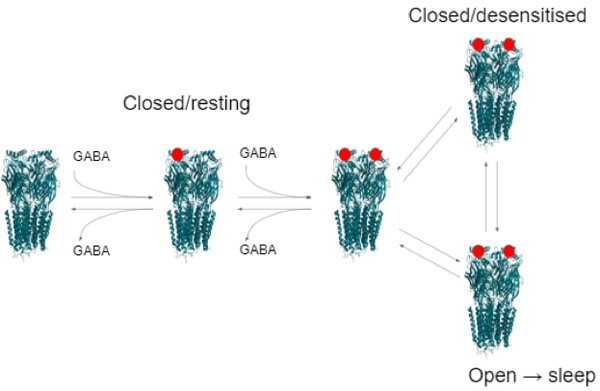Caterpillar, Butterfly, or Insect?
Evolutionary origins of how plants recognise their predators, plus plant-talk as an information sharing model

Forget that ‘animal, vegetable, mineral’ game you might have played as a kid on long car journeys, plants can do one better – they can tell exactly who is eating them.
It is not news that plants possess the ability to share information about what bird or beast is causing them damage, emitting a bouquet of volatile organic compounds (VOCs) in response to an attack. A recipient plant can then interpret variations of these chemical bouquets as detailed warnings about the identity of the attacker and initiate the appropriate defence mechanism; for example, by producing chemicals that repulse those munching down or that attract a higher-level predator to the site.
Indeed, this is a sophisticated system – but scientists have so far struggled to explain why and how this communication system has developed: until now. Recent research from Cornell University, published in Current Biology, has identified for the first time a mutual benefit for both the recipient and sender plant in this communication and uncovered important clues tracing back its evolutionary origins.
The team’s research focus is explained by Dr. André Kessler from the Department of Ecology and Evolutionary Biology at Cornell. “VOCs have been known for a while to act in that role. But what is not clear is how important it is to the plant; is it functional? Does it have any effect on plant fitness? What is the benefit to the (sender) plant?” He describes a situation where a leaf located on one side of the plant comes under attack by herbivores, and releases VOCs to communicate to a leaf on the opposite side of the plant to save itself from further damage. In this case, there is a clear benefit to the sender plant. However, this signal can be hijacked by other nearby plants, and so the true cost to the sender is giving away its competitive advantage; by sounding the alarm, a plant is giving its competitor a head-start in the fight for survival. “This open communication is like ‘eavesdropping’ on neighbouring plants”, Kessler says.
To explore this further, the team investigated two hypotheses to understand why plants might accept this cost; one of kin selection, where plants emitted a VOC bouquet that could only be understood by plants of the same genotype (with shared DNA), and a second of mutual benefit, where plants used ‘open messages’, thereby allowing non-genetically-related plants to interpret the signal.
The team found that the plants responded more strongly to VOC messages from related than non-related plants – the competitive advantage was preferentially given to plants that carry the same DNA, supporting the kin selection hypothesis. But the answer wasn’t that simple. To examine the evolutionary selection pressures that influence VOC emission, the team used two sets of plants: those that had never been exposed to herbivore attack in the past (herbivoire naive), and those that had.
They found that while the herbivore naïve plants kept to private channel VOC warnings (ie. those targeted at related plants), plants with prior herbivore exposure shared their warning signals more widely on an open communication channel.
Kessler explains that the presence of herbivore selection pressure forced them to “converge on the same language, [whereas] we showed that if you remove one agent of selection (herbivores), it makes the other (plant-plant competition) more important”.
So, does this support the mutual benefit hypothesis instead? “What I would say is we’re reconciling extremes of the same continuum, right?” Kessler reasons.
He explains that, in animals, whether the communication channel is open or closed is defined by the social system. for instance, animals in social groups communicate more openly and share the cost and benefit of warning signals, as they depend on the group for survival. Solitary animals would not gain any benefit from providing a competitive advantage to a competitor that they do not rely on for survival. However, in plants, the factors affecting the choice of open or closed communication channels are not clear - this research provides valuable insight into this.
The team’s next research plans to define the balance between these two hypotheses and the open/closed channels - is there a point at which plants switch to favouring one over the other? Is there a threshold population number where open communication channels are selected for, or a degree of genetic similarity where private channels are preferred?
This discovery also opens up other research avenues, such as use of the plant-plant communication as a model of information sharing, and even harnessing the VOC communication system for natural pest control. Recently, the Cornell University team helped develop a push-pull pest control technique in Kenyan small-hold farms, manipulating VOC messaging to alternatively repel (push) and attract (pull) pests away from crop plants. By clever placement of these push and pull plants around farmer’s fields, the valuable crop can be safeguarded from pests without needing pesticides.
Ultimately, this study advances our understanding of why a plant sends warning messages and the factors affecting how they are sent; the next big breakthrough lies in discovering how these messages are read and interpreted by receiver plants. The biosynthetic pathways leading to the emission of VOCs is well-understood, but exactly how a plant recognises these chemicals – and is able to differentiate to the precision of caterpillar, butterfly, or insect – remains unknown.
The question we are left with then is how a plant detects a VOC bouquet. Or as Kessler puts it: how plants smell!








